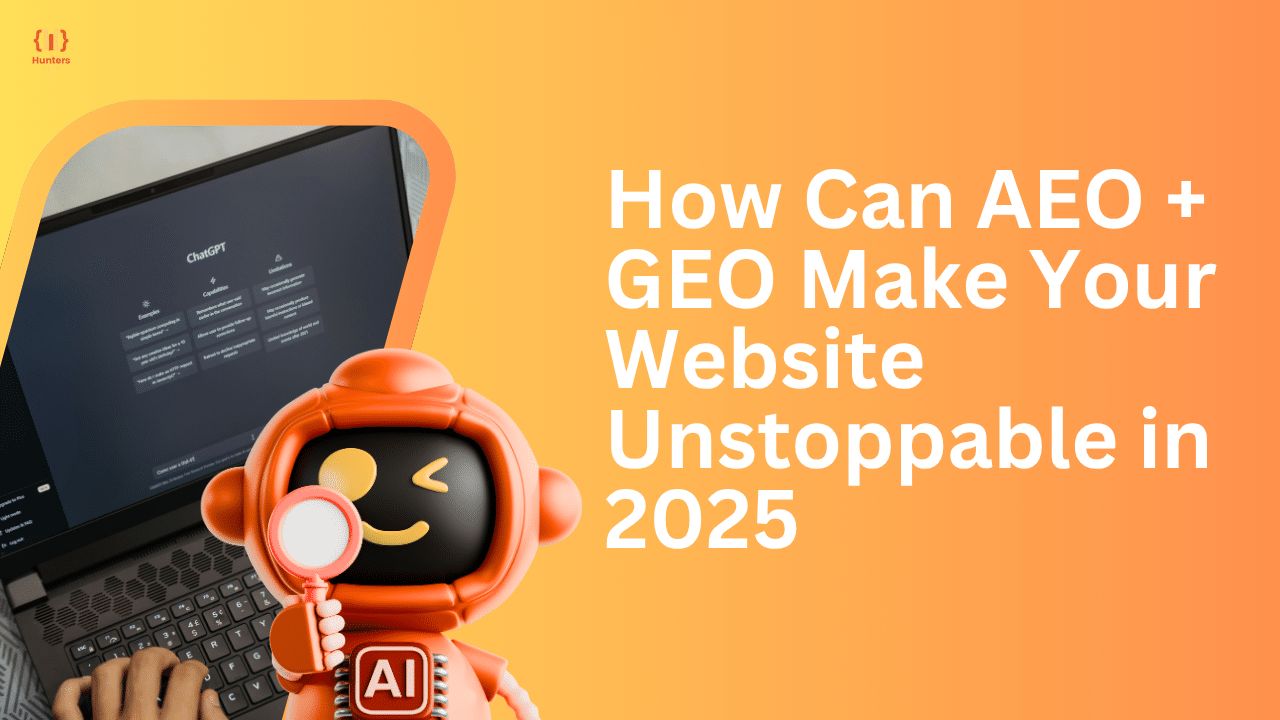For nearly two decades, marketers have chased one goal—ranking on Google. But in 2025, search isn’t just about blue links. Users now ask ChatGPT, Perplexity, or Gemini to summarize, recommend, and decide for them.
This shift from search engines to answer engines and now to generative engines has redrawn the entire digital-marketing map. Traditional SEO still matters, but the real winners of 2025 are those who’ve mastered two new optimization layers:
Answer Engine Optimization (AEO) and Generative Engine Optimization (GEO).
These two disciplines make your content readable not just by humans but by the AI systems now curating and creating information. When AEO and GEO work together, your website doesn’t just rank—it becomes the trusted source that AI models quote and users rely on.
From Search Engines to Answer & Generative Engines
Imagine this: instead of typing “best digital marketing strategies,” users now ask AI models directly, “What’s the best digital marketing plan for 2025?” The AI gives a detailed answer — and the source it references gets massive visibility. That’s the magic of AEO + GEO. They help your website get featured not just on Google, but also inside AI responses and generative answers.
Why Traditional SEO Alone Isn’t Enough Anymore
Traditional SEO focuses on ranking factors: keywords, backlinks, and technical performance. While those still matter, they don’t guarantee your brand will be cited in AI answers.
Modern algorithms prioritize context, authority, and clarity.
If your page lacks structured data or your facts are outdated, an AI engine may skip over you—even if you hold the number-one Google position.
According to Gartner (2025), 68 % of global queries will be resolved without a click through to a traditional search result.
That’s the reason smart brands are layering AEO and GEO on top of classic SEO—to maintain relevance in both human-read and machine-read environments.
Understanding the Core Concepts: SEO, AEO, and GEO
Success in 2025 means optimizing for both humans and AI. SEO boosts your site’s rankings, AEO helps AI assistants deliver your answers, and GEO builds trust with generative AI tools. Combined, they form the backbone of a future-proof digital strategy.
What is SEO (Search Engine Optimization)?
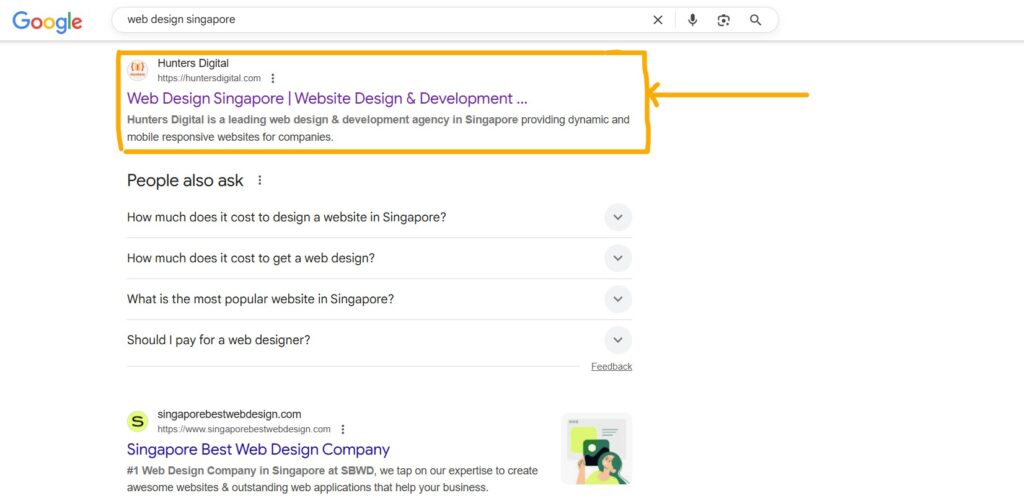
SEO is the foundational practice of making your website visible and attractive to search engines. It involves keyword research, link building, and on-page improvements that help Google understand and rank your content.
In 2025, the focus has shifted from simple keyword matching to semantic understanding. Search engines now evaluate whether a piece of content genuinely satisfies user intent.
Core modern SEO pillars include:
- Experience & Expertise (EEAT): proving you know your subject.
- Performance: page speed, mobile responsiveness, and accessibility.
- Comprehensive coverage: addressing all subtopics users expect.
But SEO alone now plays the role of foundation, not ceiling.
What is AEO (Answer Engine Optimization)?
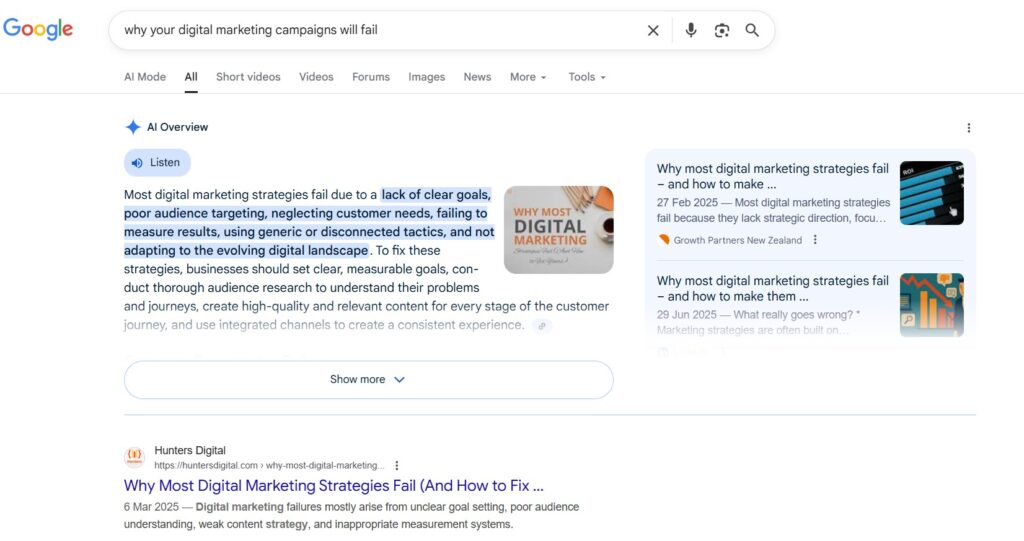
AEO is about tailoring your content so that AI systems can identify it as the most direct, credible answer to a specific question. It’s what gets your text featured in voice-assistant replies, chat summaries, and Google’s “People Also Ask” boxes.
Key elements of AEO:
| Technique | Purpose | Example |
| Structured Data (Schema) | Helps AI parse context | FAQ and HowTo markup |
| Concise Q&A Sections | Provides extractable snippets | “What is AEO?” → 50-word answer |
| Conversational Tone | Aligns with natural-language models | Write like you’re talking to a person |
| Context Depth | Adds supporting detail | Follow each short answer with analysis |
Example:
Question: How does AEO improve visibility?
Answer: By structuring content in clear, conversational Q&A form, AEO ensures AI assistants can quote your website directly when generating answers.
What is GEO (Generative Engine Optimization)?
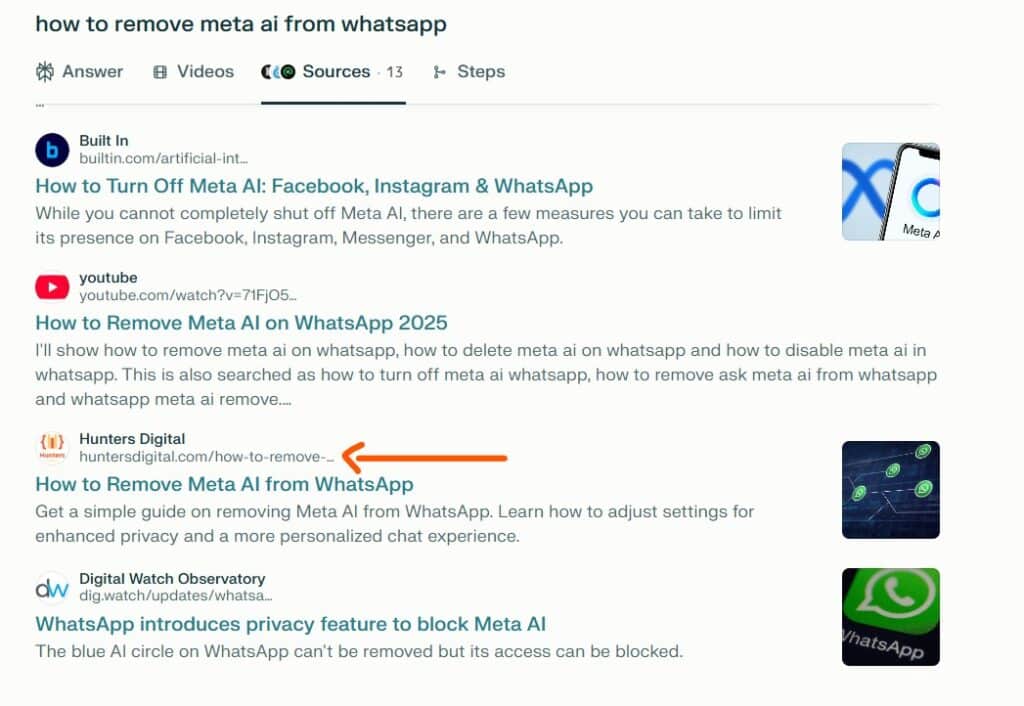
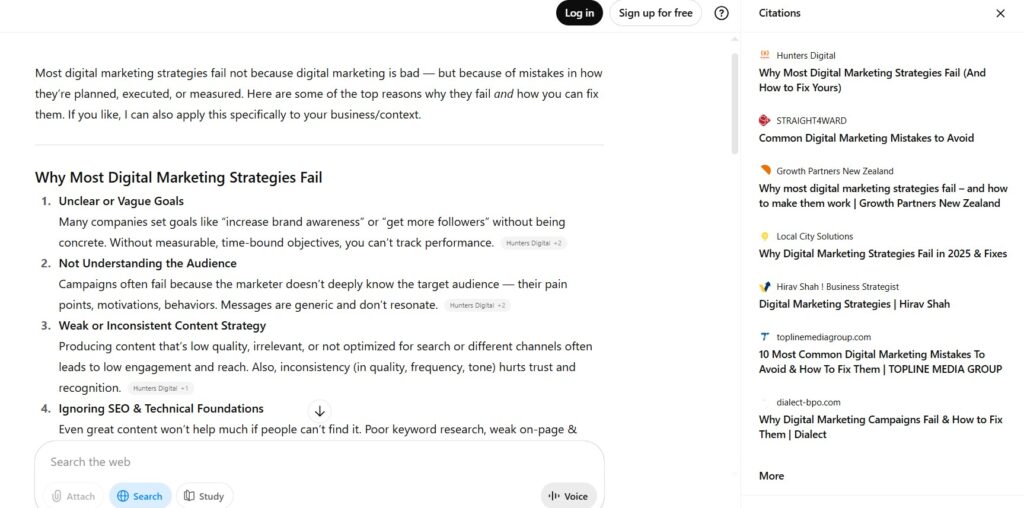
Generative Engine Optimization (GEO) refers to the practice of tailoring website content to improve its visibility and presentation within AI-powered search tools like ChatGPT, Perplexity, Gemini, Copilot, and similar generative engines.
GEO is the layer that ensures AI engines trust your content enough to use it when generating new text or summaries. Where AEO is about extraction, GEO is about credibility and semantic relationships.
GEO focuses on:
- Building well-structured metadata so AI understands your entities.
- Using verifiable, cited information.
- Allowing recognized AI crawlers (like GPTBot or CCBot) in your robots.txt.
- Maintaining consistent topical authority across pages.
When AI models such as ChatGPT or Gemini assemble an answer, they draw preferentially from high-trust, high-coherence sources. GEO makes sure you’re one of them.
The Relationship Between SEO, AEO, and GEO
You can think of SEO, AEO, and GEO as a three-tier system:
| Layer | Primary Goal | Typical Output | Key Metric |
| SEO | Visibility in search engines | SERP ranking | CTR |
| AEO | Being the chosen answer | AI snippet citation | Impressions in AI responses |
| GEO | Becoming a trusted data source | Inclusion in AI training or summaries | Mentions/citations by AI |
Together, they create a feedback loop:
SEO brings the traffic → AEO secures featured exposure → GEO cements your authority within AI systems. The more reliable you appear to AI engines, the more often your information is used, boosting both brand visibility and human trust.
The Rise of AI-Powered Search Engines
AI-driven tools like ChatGPT, Perplexity, and Google’s SGE now deliver instant, personalized answers. Search has evolved from keywords to conversations, changing how users find and trust information online.
How AI is Changing the Way People Search
In the early 2010s, search was mechanical. You typed “best laptop 2015,” skimmed through ads, and clicked on one of the top links. By 2025, that behavior has all but vanished. Today’s users say or type complete, conversational prompts like:
“Which laptop should I buy for video editing under $1,000?”
Instead of showing ten blue links, AI-powered engines such as ChatGPT, Gemini, and Perplexity AI deliver a summarized answer drawn from multiple credible sources — often without you ever visiting a website.
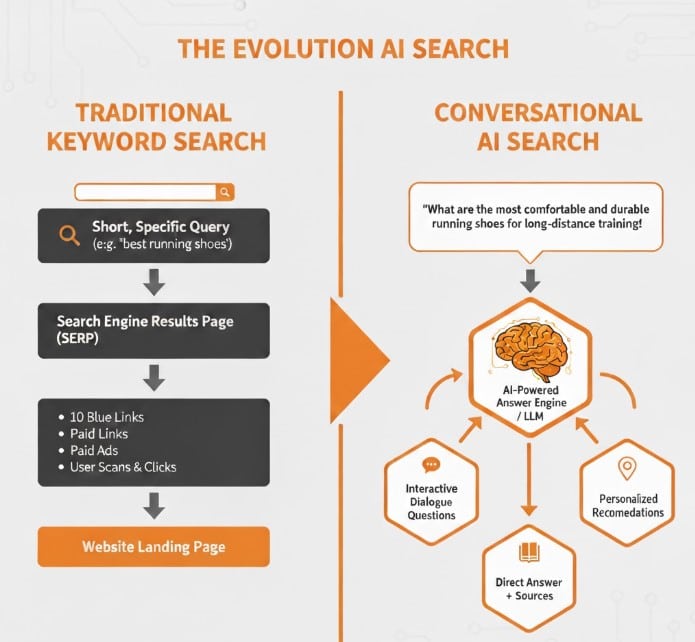
The key difference?
Intent recognition.
Artificial intelligence no longer matches words; it interprets meaning. A user’s tone, phrasing, and implied purpose guide the response.
Example:
If someone asks, “How can small businesses use AEO?”
Traditional SEO might surface listicles or guides.
An AI engine, however, instantly summarizes the strategy, cites sources, and may even recommend tools — all within seconds.
This evolution means your content must be AI-readable and contextually complete, not just keyword-optimized.
From Google to ChatGPT and Perplexity: The Future of Information Discovery
For nearly two decades, Google was synonymous with “search.” But in 2025, the term “search” itself is evolving.
Users now engage with multi-agent AI ecosystems, such as:
| Platform | Core Feature | Typical Use Case |
| Google SGE (Search Generative Experience) | Generates summaries above organic results | Everyday queries |
| ChatGPT (with browsing + plugins) | Personalized, contextual answers with sources | Research, planning, writing |
| Perplexity AI | Real-time, cited responses | Academic and business analysis |
| Gemini | Deep integration into Google Workspace | Professional knowledge retrieval |
| Claude.ai | Context-aware long-form synthesis | Ideation, policy drafting |
Each of these systems prefers structured, well-contextualized content.
If your content is unclear, outdated, or lacks schema markup, it’s effectively invisible to these engines.
Key insight:
By 2025, AI-driven discovery platforms are estimated to influence over 70% of web traffic decisions, according to BrightEdge’s 2025 AI Search Forecast. That means your website’s visibility depends less on “rank position” and more on whether AI trusts your data enough to reuse or recommend it.
Why AEO Matters More Than Ever in 2025
Search is out — answers are in. In a world where ChatGPT, Siri, and Gemini reply instantly, AEO makes sure it’s your words they use. Think of it as SEO’s smarter sibling — helping your brand skip the line, own the spotlight, and become the voice behind every AI answer.
The Rise of Zero-Click Searches and Voice Assistants
“Zero-click searches” have become the silent killer of website traffic.
According to Semrush’s 2024 Search Behavior Report, 64% of all Google searches now end without a click.
Why? Because users get their answers directly on the results page — through snippets, knowledge panels, or voice assistants.
Add to that the explosion of voice search — expected to reach 8.4 billion devices globally by 2025 (Statista).
When someone asks Siri or Alexa, “Who are the best AEO consultants near me?”, they won’t browse through ten blue links.
They’ll hear one authoritative answer — and you need to make sure it’s yours.
That’s what AEO is all about: crafting content so precise, structured, and conversational that AI systems pick it as the best possible answer.
How AEO Boosts Visibility in AI Answers
AEO makes your content easier for AI to understand, extract, and quote.
When engines like ChatGPT or Perplexity respond, they scan multiple indexed pages looking for direct, factual statements and structured Q&A patterns.
AEO-optimized content typically ranks higher in:
- AI citations (your brand being mentioned in generated responses)
- Featured snippets (Google’s top answer box)
- Voice responses (spoken answers from smart devices)
Example:
A digital marketing firm implemented AEO across the blog posts by:
- Adding FAQ schema
- Rewriting intros into conversational Q&A
- Optimizing meta descriptions for direct answers
Within 90 days, they saw:
- 38% increase in featured snippet placements
- 27% higher click-through rates from AI-powered results
- 21% more branded voice mentions
AEO Best Practices for 2025
Optimizing for AEO isn’t about guessing what AI wants — it’s about structuring information the same way humans think and ask questions.
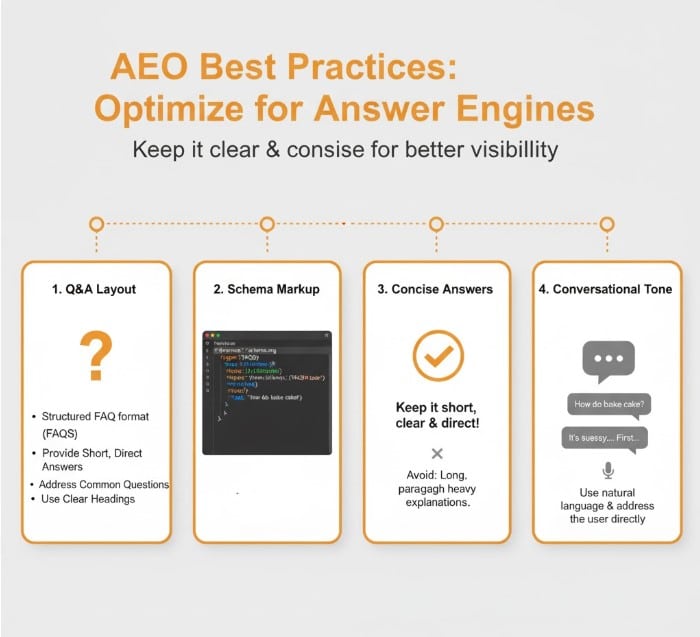
Let’s break down actionable steps you can take to dominate AEO this year:
| Best Practice | Why It Matters | Implementation Tip |
| Use schema markup | Helps AI identify structured answers | Add FAQ, HowTo, and Q&A schema via JSON-LD |
| Write in Q&A format | Mirrors how users talk to AI | Use H3S like “What is X?” “How does X work?” |
| Keep answers concise | AI favors short, factual responses | Aim for 40–60 words per question |
| Add supporting context | Builds credibility | Expand below each short answer with a deeper explanation |
| Use conversational tone | Aligns with how AI interprets queries | Write naturally, avoid keyword stuffing |
Pro Tip:
AI doesn’t like ambiguity. Use definitive, confident phrasing.
Instead of:
“AEO might help your SEO performance.”
say:
“AEO strengthens SEO performance by making your answers machine-readable.”
This assertive tone signals expertise, improving your EEAT (Experience, Expertise, Authoritativeness, and Trustworthiness).
Why AEO and SEO Work Better Together
Some marketers treat AEO as a replacement for SEO. In reality, it’s a strategic enhancement.
SEO helps you get discovered. AEO ensures your answers are chosen.
Think of SEO as building the highway, and AEO as putting up bright signs that say, “Here’s exactly what you need.”
When done right, this synergy yields:
- Higher AI snippet inclusion
- More organic voice mentions
- Better engagement through clear, conversational content
“The goal isn’t just to be found — it’s to be featured.”
GEO: The Missing Link Between SEO and AI
If SEO is about being found and AEO is about being quoted, then GEO (Generative Engine Optimization) is about being trusted and reused by AI.
In 2025, search is no longer just about visibility—it’s about influence. Generative AI platforms like ChatGPT, Gemini, Perplexity, and Claude don’t merely show users web pages; they synthesize new content from the data they find. If your site feeds that data, your brand becomes part of the AI-driven information ecosystem.
What Makes GEO Different from SEO?
If SEO gets you seen and AEO gets you selected, GEO gets you trusted.
Generative Engine Optimization focuses on how AI models interpret, remember, and reuse your content in future outputs.
It’s less about keywords and more about semantic reliability — proving to AI systems that your content is accurate, contextual, and verifiable.
Think of it like this:
- SEO helps your pages rank on search engines.
- GEO helps your pages resonate with AI models.
AI crawlers such as GPTBot, AnthropicBot, and GeminiCrawler constantly scan the internet to find reliable, structured, and factually accurate content to use for responses. GEO ensures they understand, trust, and quote your site instead of a competitor’s.
| Aspect | SEO Focus | GEO Focus |
| Target | Search algorithms | AI models & answer engines |
| Goal | Rank in SERPs | Be cited or referenced in AI outputs |
| Core Signal | Backlinks, keywords | Credibility, structure, freshness |
| Optimization | On-page and off-page | Semantic, factual, and contextual |
| Success Metric | CTR, ranking | AI citations, mentions, reuse |
Stat Insight:
By mid-2025, over 62% of generative search results on platforms like ChatGPT and Gemini referenced only 1% of websites with verified GEO structures (DataBox 2025).
How GEO Works with AI Models like ChatGPT, Gemini & Claude
AI models do not “crawl” like Google spiders — they interpret content semantically. When models fetch data, they analyze context, coherence, and credibility before quoting or paraphrasing.
Here’s how the process looks:
- Crawling: AI crawlers like GPTBot collect structured text from accessible sites.
- Parsing: They analyze language clarity, metadata, and schema.
- Scoring: Sites are scored based on EEAT (Experience, Expertise, Authoritativeness, Trustworthiness).
- Inclusion: Credible sources are stored as “trusted” for future generative responses.
If your site demonstrates expertise, structured information, and factual grounding, it becomes part of the AI’s trusted index.
That’s how GEO ensures long-term visibility—even when traditional SEO metrics change.
Key GEO Optimization Strategies for 2025
In 2025, GEO (Generative Engine Optimization) focuses on making content discoverable by AI tools like ChatGPT and Gemini. Use structured data, clear Q&A formats, and authentic sources to boost visibility. Prioritize brand mentions, multimodal content, and E-E-A-T to become the preferred AI-generated answer.
1. Optimize Entity Relationships
AI understands entities (people, companies, topics) and their connections. Use semantic linking and consistent entity mentions to strengthen topical clarity.
Example: “OpenAI’s ChatGPT uses GPT-4 architecture for generative search” — clearly defines “OpenAI,” “ChatGPT,” and “GPT-4.”
2. Publish Verifiable, Cited Information
AI prefers verifiable truth. Always link to authoritative sources — government data, peer-reviewed studies, or top-tier media.
Tip: Cite the source and update old references regularly.
3. Enable AI Crawlers
Add the following to your robots.txt file:
User-agent: GPTBot
Allow: /
This ensures your content can be indexed by OpenAI’s models and similar crawlers.
4. Use Metadata and Schema Intelligently
Include Open Graph, JSON-LD, and FAQ schema to clarify structure. Generative engines rely on these to extract reliable answers.
5. Maintain Topical Authority
AI rewards depth over breadth. Instead of covering 50 topics superficially, dominate 5 with comprehensive, interconnected content clusters.
6. Add Author Transparency
Include detailed author bios, credentials, and publishing dates. Models like Gemini heavily favor transparent and human-authored material.
Step-by-Step Guide to Building an AEO + GEO Strategy
You’ve now seen the why — let’s get into the how.
This step-by-step framework will help you transform your site into an AI-friendly, high-authority destination that earns both human and machine trust.
Step 1 – Content Structuring for Humans & AI
AI reads in patterns. The clearer your layout, the easier it is for generative engines to digest and reuse.
Key Actions:
- Use H2/H3 subheadings that mirror natural questions: “What is…?”, “How does…?”, “Why should…?”
- Keep answer sections under 60 words, then expand below for depth.
- Include lists and tables — AI tools parse structured data faster than long paragraphs.
- Make every paragraph self-contained — avoid forcing AI to interpret missing context.
Pro Tip: Use an AI-friendly readability score (e.g., Flesch Reading Ease 60–80). Shorter, active sentences increase your chances of being quoted.
Step 2 – Optimizing for Conversational Queries
The way users search has changed. They no longer type fragmented keywords — they ask complete questions.
Example:
- Old SEO keyword: “best laptop 2025”
- Modern AEO/GEO query: “What is the best laptop for video editing in 2025?”
Best Practices for Conversational Optimization:
- Add long-tail Q&A sections at the end of articles.
- Use question-based titles for blog posts.
- Integrate FAQ schema and HowTo markup.
- Mimic human phrasing — contractions like “you’ll” or “it’s” sound natural.
Bonus Tip: Tools like AlsoAsked.com or AnswerThePublic can help identify conversational questions your audience is asking right now.
Step 3 – Incorporating Schema Markup and FAQ Schema
Schema markup is the connective tissue between your content and AI understanding.
It provides structured meaning behind your text — telling AI what it’s reading, not just that it’s reading.
Popular Schema Types for AEO + GEO:
| Schema Type | Purpose | Ideal For |
| FAQ Schema | Q&A sections | Service & blog pages |
| HowTo Schema | Step-by-step guides | Tutorials & instructions |
| Article Schema | Identifies structured blog content | Editorials |
| Product Schema | Price, ratings, reviews | Ecommerce |
| Author Schema | Authorship transparency | Expert blogs |
Adding this not only helps Google’s SGE but also improves your odds of being cited by ChatGPT and Gemini.
Step 4 – Tracking and Measuring Success
You can’t optimize what you don’t measure.
While AI-generated visibility is still new, there are tools that help you track progress in 2025.
Key Metrics:
| Metric | Meaning | Tool |
| AI Mentions | Times your domain appears in generative results | ChatGPT Mention Tracker, Perplexity Insight |
| Featured Snippets | Number of answers cited in SERPs | Semrush, Ahrefs |
| Dwell Time | Average reading duration | GA4 |
| AI Traffic Share | Percent of visits from AI-linked results | BrightEdge AI Analytics |
Example Workflow:
- Track monthly AI mentions using a tool like ChatGPT Mentions Tracker.
- Audit which articles are most quoted.
- Reverse-engineer their structure and tone for future content.
Conclusion
In 2025, your website’s power isn’t measured by how often people find it — but by how often AI uses it.
By combining SEO, AEO, and GEO, you future-proof your content for both human readers and AI interpreters.
The formula is simple but transformative:
SEO gets you indexed.
AEO gets you quoted.
GEO gets you trusted.
When your site becomes both search-visible and AI-trusted, it’s not just ranking — it’s running the conversation.
2025 isn’t the death of SEO — it’s its evolution.
If you align your website with the AEO + GEO framework, you’re not chasing algorithms anymore.
You’re shaping the answers, defining the narratives, and becoming the authority that AI trusts.
“The future of search isn’t about clicks — it’s about credibility.”
Ready to make your website unstoppable in 2025? Contact us to supercharge your SEO game with a strategy built for both search results and AI-driven platforms.
FAQs
AEO (Answer Engine Optimization) focuses on helping AI-powered search engines understand and display your content as a direct answer to user queries.
GEO (Generative Engine Optimization), on the other hand, ensures that generative AI models — like ChatGPT or Gemini — recognize, reference, and generate answers based on your content.
As search evolves from simple keyword searches to AI-generated responses, optimizing for AEO and GEO ensures your content appears in both traditional search results and AI answers. This dual approach future-proofs your visibility and drives more consistent, high-quality traffic.
AEO results can show up fast — sometimes within a few weeks, as AI overviews and snippets start noticing you.
GEO, though, is a long game. It takes time for AI systems to recognize and trust your content — usually a couple of months.
But once they do? Your brand becomes part of the AI conversation. And that’s priceless.
AEO and GEO will continue to shape AI search ecosystems, with more engines offering “cited answer” features. By 2026 and beyond, expect:
AI tools are crediting original content more transparently.
New metrics for AI visibility.
Stronger incentives for publishing factual, verifiable information.
Not at all — they’re the evolution of SEO, not the extinction of it.
Think of SEO as your solid foundation, AEO as your secret weapon for AI snippets, and GEO as your ticket into the AI spotlight.
You need all three to dominate in 2025 and beyond.

